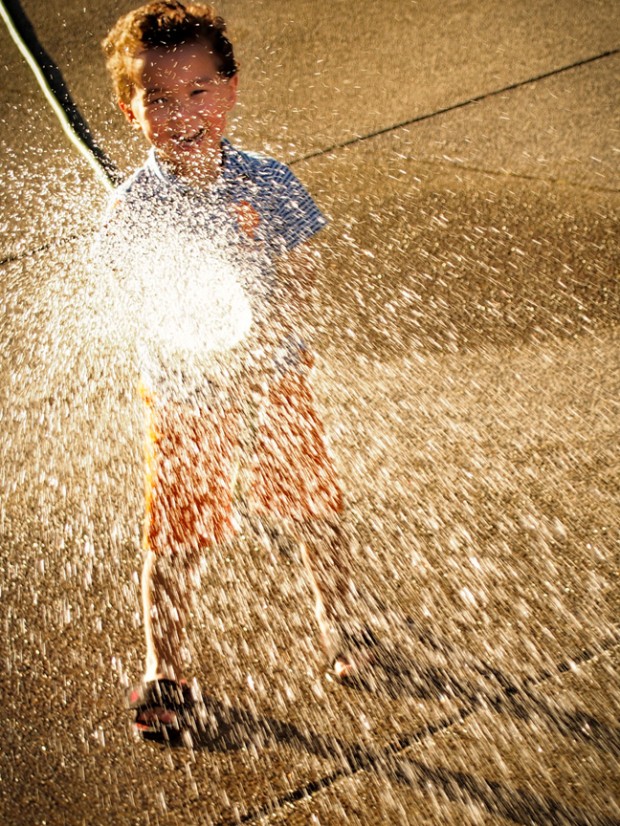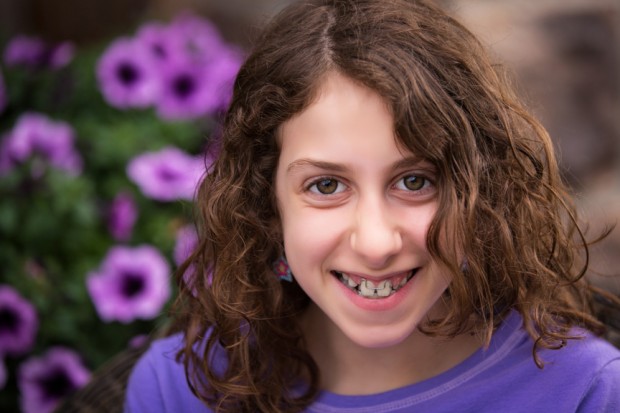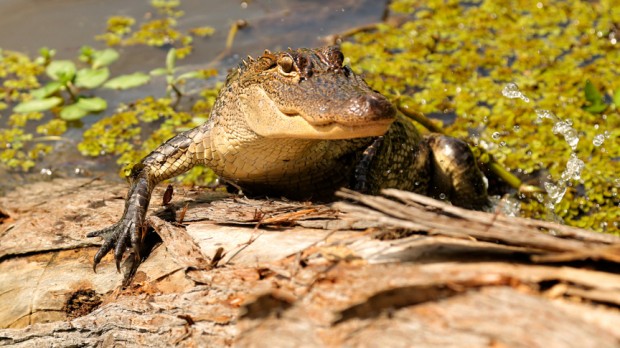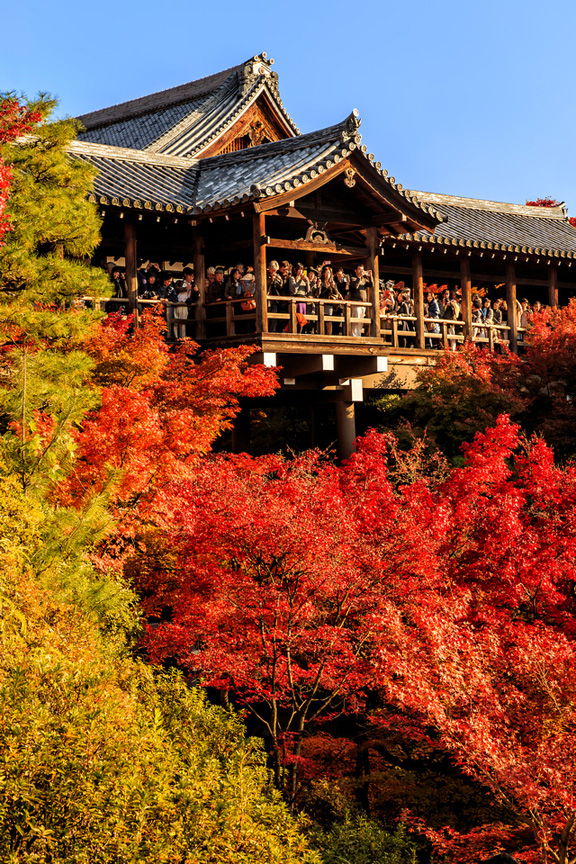
An imperfect pub shot is both a rare portrait as well as a great memory
Recently the Ethernet support on my DroboPro stopped working so I thought I lost access to 12 terabytes of archived photographs. I had used Drobo's dual disk redundancy feature to make sure I was covered if a drive crashed, and I had seen this work flawlessly several times over the last few years. However, I didn't count on the connection between the computer and Drobo dying. After multiple attempts to get help from Drobo that went unanswered I started to panic!

Photos from fun days with our family are irreplaceable
I used to have all my images backed up "in the cloud", but after spending nearly a year getting all of my images upload my service providers rate went from $9.99/mo to nearly $400/mo so I cancelled the service. I kept saying to myself that I'd take care of this problem next week, but I kept procrastinating. When the iCloud hack happened I also began to get concerned about having my images in the cloud, so that had me reconsidering my local backup solutions again.

Priceless expression photos are the ones I treasure the most
This experience really got me to think deeply about what had happened and what I'd do if I could go back in time. The funny thing is that I didn't think much about losing my money making commercial photos that had provided for my family. I did think about losing the snapshots and videos taken of my family and I was sick to my stomach about it! My older children were born when I still shot film so I had negatives to fall back on. However, my youngest (age 5) was born in the digital age so the only backups were electronic!

Kids grow fast, so milestone shots remind you of those fleeting moments
After racking my brain I remembered that all wasn't lost because of the work that I had done for my printing series a few years back. While I certainly hadn't printed enough, I did have some prints of some of my most cherished moments with my family. I also had some images stored on Facebook as well as my very rarely used sites on 500px and Flickr. I don't like storing my best images on social media so all that was really there were a bunch of cell phones shots or stuff that I didn't care as much about.

This unexpected pose from my grandma "in-law" is a priceless treasure
What was missing for both print and online were the personal photos that captured memories of my favorite life experiences, few of which would be considered works of art - ha, ha! It was for this very reason that I hadn't taken the time to print those, because even I don't want to wallpaper my house with photos from my kids' birthdays, pictures of my meal from a great anniversary dinner, or the incredible hotel room in Asia with the jaw dropping view. These aren't works of art, but they are more valuable to me than my photos which had built my career. In the old days these were printed out as 4×6" photos and stored in photo albums, but the cost of film and printing limited how much I actually kept. In addition, negatives in a safe deposit box offered a plausible backup for the print photos that I'd toss for lack of storage space for them.
I never throw away old hard drives, so I did find a few years worth of photos on my fireproof ioSafe, as well as some scattered across loose drives. About a week after thinking the rest were lost, I remembered that my DroboPro not only had my normal iSCSI Ethernet connection, but also a USB connection. I plugged it in and I was back in business, albeit slower than before.

A rare shot of a my wife and her mother who are now a half a world apart
With access to my photos restored, the first thing I did was export my entire collection from Lightroom as JPEG's that were large enough to print at 8×12". After a couple of days of my computer chugging away, this shrunk my massive storage needs down to a more manageable 500 GB. This gave me "at least something" I could hang onto if all were lost again. I also took this time to go back and look at some of the photos that I had feared were lost forever. This sent me down the rabbit hole of editing some photos that I never planned to edit where I discovered another problem - some of my images shot in only RAW format were no longer readable by current raw processors from major camera makers. Sure, I could see the thumbnail but that's just a small jpeg. However, the ability to use that precious raw image data was gone. Using older versions of their raw processors that I thankfully still had backed up on CD worked - but only after I found an external CD drive to use to install them!

The last pre-puberty shot of a camera shy son isn't art, but it's important to me
Last year I saw this article entitled "This may be the oldest surviving photo of a human." Earlier this year I also read this great article about "Why your digital photos might die before your grandkids see them," and as I was writing this article the web was buzzing about an article entitled "Print Your Photos or Risk Losing Them to the Digital Dark Age, Internet Pioneer Warns." In the end, all of these great articles say basically the same thing - the most certain way for your photos to outlive you and deprecated technology is to print your photos (using archival worthy ink and paper). However, I have hundreds of thousands of photos! I have neither the time nor the financial means to print them all, much less space store them all!
As a result, I've decided to go about solving this problem in a more manageable way.
- I'm returning to storing my photos locally on one ioSafe drive for each year as I used to do back when I got a new ioSafe each year. This spreads my risk to only one year per drive and protects me against fire, water, and connection problems between the drive and my computer. I already break my Lightroom catalogs up by year, so this old system is one I will get back into the habit of doing again.
- My backup software will now backup all of my drives to a new NAS. Currently I'm considering the ioSafe NAS powered by Synology. This gives me a solution for the big backup of everything that is available for quick access and recovery, yet protected from on-site disasters. This isn't a cheap solution and it may not be for everyone, but with my 12 TB of data that will likely double in the next couple years it works for me - for about the cost of a new camera body.
- I'll use one a 1 TB drive to hold JPEG's large enough to print at 8×12 for my whole collection, and I'll store that drive in a safe deposit box. This will be my digital photo album of everything that uses a format that should be around for decades and saves me the hassle of sorting through tons of photos for what needs to be backed and what doesn't.
- I'll definitely start printing more of the memorable photos at 4×6 again with a printer that uses archival ink. I wrote an article about Getting Great 4×6 Prints Without Any Hassle for those "honey, can you just print this" scenarios that never seem to go as smooth as we hope. It's time for me to stop waiting for my wife to ask me to print and just get in the habit of doing it at least monthly. I'll also take a few extra minutes at import into Lightroom time to mark the photos that need 4×6 printing so they are easy to find when I'm ready.
- These images that I flag to print will also get uploaded to my Zenfolio account in the form of a private password protected gallery. This experience made me and my wife realize how many photos we take that the world never sees simply because there's just not enough time to edit them (even with Lightroom).

A day with the gators is a trip that we still all talk about
Caution, Don't Be Too Ambitious
Decades from now when people see your meaningful family photos they will care less about the color, cropping or distractions you removed in in Photoshop. Even today my mom still can't understand why I don't put my subject in the center of all of my shots so she sometimes thinks the unedited shots are better - ha, ha!
When doing your archive printing I also recommend that you print any of the photos that you haven't already edited straight from the in-camera JPEG (if you have it, otherwise the from the RAW). I learned this lesson long ago which is why I just buy extra memory cards and shoot RAW+JPEG. This allows me to have a JPEG that matches what I saw on my rear LCD when I took the shot, not today's software interpretation of how it should process the RAW file (which does change over time and not always for the better).

Like many people, I have many photos that are awaiting the final step – printing
Since I love printing, I've never had a problem printing the photos that I've taken hours to edit as that's my favorite part of the creative process. To hold a print in my hand rendered exactly as I intended gives me the ultimate satisfaction. I don't have to worry about other's poorly calibrated displays or web browsers rendering things differently than I intended as you see the image exactly as I envisioned on a substrate that adds to the experience. As a result, I can take a little time to mark the photos that I'd like to give this attention to later, but the key point here is to not let yourself get bogged down trying to edit while you archive print. If you do, archive printing will be so cumbersome you'll never get it done.
Are Your Images Really Safe?
I've had conversations about backing up with fellow photographers and geeks many times over the years. Nearly everyone I talk to falls into two camps: those who think they have it all figured out; and those who know they are screwed if something bad happens. To find out what camp you are in, consider the following ways your data could be lost:
- Your computer hard drive crashes and you lose the photos you spent the last couple days editing. Imagine your client is threatening legal action if they don't get their images today no matter what your signed contract says.
- Your house destroyed by a natural disaster (fire, tornado, flood, etcâ¦). What if the disaster was so bad your hard drives can't be found (mudslide, etcâ¦)?
- A hacker gets remote access to your computer without your knowledge and unleashes a virus that corrupts every file to every computer connected on your network and those connected to them remotely.
- The file format your raw files are stored in stops being supported and the current operating systems (perhaps a new future smartphone OS) you use can't run the old software? What if all software dropped support for DNG 10 years from now because it wasn't popular enough? What if PSD was an unsupported file format 20 years from now?
- Your computer and external drives are physically stolen and lost forever.
- You die and nobody knows how to get to your images.

The joy of my son who sees his dad for the first time in 3 months
I know that I have work to do to really protect my data, so there's not really just one solution to address all the possibilities. I'll have an offsite backup solution with a regular schedule for updating and storing that drive offsite (TIP: having two to rotate between is wise). I'll also print to make sure my most cherished photos are archived saved for future generations to protect against technology challenges. Finally, I'll store those 8×12 sized images of my most cherished photos online in a private protected gallery for family members so that there's zero chance that they'll never be seen.
I hope this article inspires you to think about the true value of your non-portfolio shots to yourself and your family. I also hope it helps you to put together a plan to make sure those images outlive you by many decades or even centuries to come!
You can see more of Ron's work at RonMartinsen.com, keep up with his blog at RonMartBlog.com, follow him on Facebook, Google+, and Twitter, or learn about his Printing Series, right here!



Hi Ron
As a nervous owner of a Drobo the hair stands up on my neck when I hear these stories..
In your situation I was happy to hear you found away to save your files but I was curious if all else failed could you have saved your files by borrowing or purchaseing another Drobo and then inserting your drive pack as a way to access and save the files?
Thanks
George
Hi George,
In theory I probably could have, but when I sent multiple emails and create multiple support tickets saying I’ve had a complete loss of a 12TB of data and they don’t respond, that doesn’t motivate me to want to invest more money in their products. Heck, I even played my popular blogger card and reached out directly to my marketing contact and the CEO and didn’t get so much as even a courtesy reply asking me to contact support.
I’m done with Drobo and am now going about the time consuming process of moving away from their platform.
Ron…
Ha… No all I meant was…..that if moving the disk pack to another Drobo borrowed or purchased was the only way to save all the files…. it would be worth it if it worked! Once you saved them you could throw the Drobo away ….and go a different path…. I’m just preparing myself for the day my Drobo blows up… Thanks
Ah, I see – makes sense.
Probably the best, and most useful Guest Blog post that I can remember. Thanks, Ron!
Thanks KC! :) Hopefully you can join me at my blog for other articles and reviews!
Good post Ron. And I have recently taken steps to “improve” my backup situation too. But I have another thought regarding all of this. You mentioned that you have hundreds of thousands of images. Now don’t take this the wrong way, but in the future who will want to take the time to sift through ALL those images? You, when you’re 80 years old? Your children? Your grandchildren? People barely have the patience to view a 5-10 min slideshow these days, let alone hours upon hours of photos.
So my question is how do we BEST preserve the BEST of what we have? As you mentioned, prints are a great way to do this, but start to take up space yet again. Slideshows of family trips, etc. are great too, but then you might encounter future playback (software) issues. For me, I’m posting my BEST shots to 500px and all my second best shots to Flickr as well as backing up locally. I realize these sites might not last forever, and I may have to move them somewhere else in the future, but at least the images are in the cloud and can be downloaded by me whenever they need to be. Flickr gives me 1TB of free storage and copyright protection on my images. That’s the least expensive storage deal I can find. I’ve even made the occasional sale via Flickr. If you tag your images properly it can happen. By doing this my family and friends can go and view the images any time at their leisure. Even after I’m gone. It’s far from perfect, but it’s one way to deal with the issue you discussed. Even having your own web site doesn’t solve the problem because what happens to it after your gone? Who’s going to pay to keep it going?
Sorry for the ramblings. I’d love to hear others thoughts on this topic. It’s worth some discussion for sure imo.
Thanks Bill and you bring up some very valid points. I agree 100% that 95% of what I have should probably be deleted after I’m gone, but until then I keep it. I’ll admit that part of it is laziness but sometimes I find myself harvesting bits from old images when compositing so that’s the bigger reason why I keep a lot of this stuff around. However, the biggest “backlog” are the photos that are on my todo list – the ones I’d like to spend time with but never seem to find the time to do that to!
This is why I suggested putting them on a service like Zenfolio. It’s backed by Art.com which has been around since 2006 and it has a large enough customer following (and revenue stream) that in the worst case someone would aquire them. The business models for Flickr and 500px aren’t as strong, so despite their large followings they aren’t likely to be generating the revenue that Zenfolio is so I’d doubt they’d outlast Zenfolio. Even if that happened, it wouldn’t happen overnight, so it’d just mean that things need to be moved elsewhere and some services do offer a migration solution.
In the end the main take away here is to have a good backup plan, but also try to have a plan that doesn’t include technology that can become obsolete – like the print. I’ll definitely start printing more – without editing – just to make sure I have that physical record of my most cherished memories. After all, nobody wants to see my grandma in law saluting or my son’s portrait on 500px. :-) What’s more, many of those memories aren’t online portfolio worthy so that would just bring out the web trolls. :)
I’m with you on the backlog thing Ron. I am only halfway through converting about 26 Hi-8 tapes to digital so I can start editing the family vacations and early years videos. As for Grandma and the other family pics you posted, I think Flickr is fine for those. You can create collections and sort things however you like. I view their Photostream as basically an image diary that I put entries into as I see fit. And I don’t think you’d encounter any troll traffic for that. But I agree that if you have images that you think might sell, or you want to showcase your portfolio, then a site like 500px or Zenfolio is much better suited for that. That’s why I mentioned I only post my BEST images to 500px. Cheers!
Ron,
Thanks for a great, resourceful article (and your blog site). I’m glad I found it!
I’m uber-paranoid about my photos as my wife’s house was robbed when she was little and for some reason they took all of their family photos. So now there are very few pictures of her family growing up, sadly. I’m also on a mission to scan and archive slides and old VHS video of my own family before it is too late.
For my current digital photos, I do a weekly backup on Mondays of my external USB3 mobile working drive that I use with my Macbook to both a home server (mac mini) and home raid array (QNAP). The home server backs up continuously to Crashplan using secure encryption (my own key). The home server also mirrors itself daily to a 4TB USB drive which I rotate weekly offsite at my office.
I am looking to get into printing, as even the “pro” online printers have been giving me disappointing results, so I really appreciated finding your web site. I bought your e-book and I’m thinking of buying an A3 sized printer. I know you have reviewed mostly high-end printers, but do you have any thoughts on the Epson R2000 or Canon Pro-100?
Without a doubt, I would strongly recommend the Epson Stylus Pro 3880. Compared to my old Epson Stylus Photo R1800, the 3880 is a dream—and I can print on the greatly superior Epson Signature Worthy papers. Having a print come out of the 3880 just does the heart good.
i hear you – that’s how I felt when I got my 3880 too. It’s an excellent printer that does fantastic for occasional use printing because it never has head clogging problems.
Check out my printing series but also look out for some reviews I have coming soon. The new Epson P600 is basically all that is good about the 3880 with the modern advantages of wireless printing and an improved ink set designed specifically for photographers. It can’t do prints as big as the 3880 but it’s better than the R2000 and Pro-100 from what I’ve seen so far. My full review is coming later this year. Myprinting series is at http://www.ronmartblog.com/p/printing-series-articles.html
hmm, does really anybody feel comfortable to have his most valuable photos out there in a cloud. have seen enough “100% secured” sites, accounts and whatever been hacked and many more I and nobody knows – there is a lot of criminal energy out there and a lot of knowledge. No, whatever someone tells me, I don’t want my photos out there
Yep, I hear you. This is one reason why you could potentially do your own NAS that isn’t publicly available on the web. You could bring it online to do certain backup operations then physically unplug the net cable after the sync is complete. The only thing that is 100% secure is to not have a network cable plugged in :)
Ron – really good post. I have an aging Seagate drive that is pretty much a solo back-up over the past 3 years, so this is super good timing as a reminder. My graphic artist wife – ever the smarter part of our family – has a big-a** Drobo and an additional redundant drive, but we don’t yet do any offsite back-ups. Cheers mate…
Check out my hard drive failure rate info for Seagate drives at http://www.ronmartblog.com/2015/02/review-iosafe-1515-nas-powered-by.html – you’ll probably want to do something sooner rather than later! :)